PIN protection on Trezor devices
Understanding PIN protection
Your PIN (Personal Identification Number) is a permutation of numbers that you set when initializing your Trezor hardware wallet. PIN protection ensures your Trezor is safe from unauthorized access, and just like the PIN for your bank card or mobile phone, it should only be known to you!
Choosing a strong PIN
A PIN is a powerful tool to keep your crypto safe. It is a barrier protecting your accounts from unauthorized physical access to your device. We strongly recommend all Trezor users enable PIN protection and choose a unique and memorable number. Even if someone gains access to your Trezor, you will have enough time to move your funds to safety. Brute-forcing a strong PIN is very difficult because Trezor exponentially increases the unlock countdown timer with every successive incorrect PIN entry.
Do not use a simple or predictable PIN (e.g., "1234" or your birthday) or any series of repeated or sequential numbers.
- Do not repeat numbers, as this increases length but not complexity.
- Don't use sequences, as they are easy to guess and usually the first combinations tested.
- Use as many numbers as possible to increase complexity—we recommend using a PIN of at least 4 digits.
- Your PIN can have a maximum length of 50 digits.
Setting a PIN for your Trezor device
During the initialization of your Trezor Model One, Trezor Model T, or Trezor Safe 3, in the third step, you'll be asked to set a PIN to secure your device.
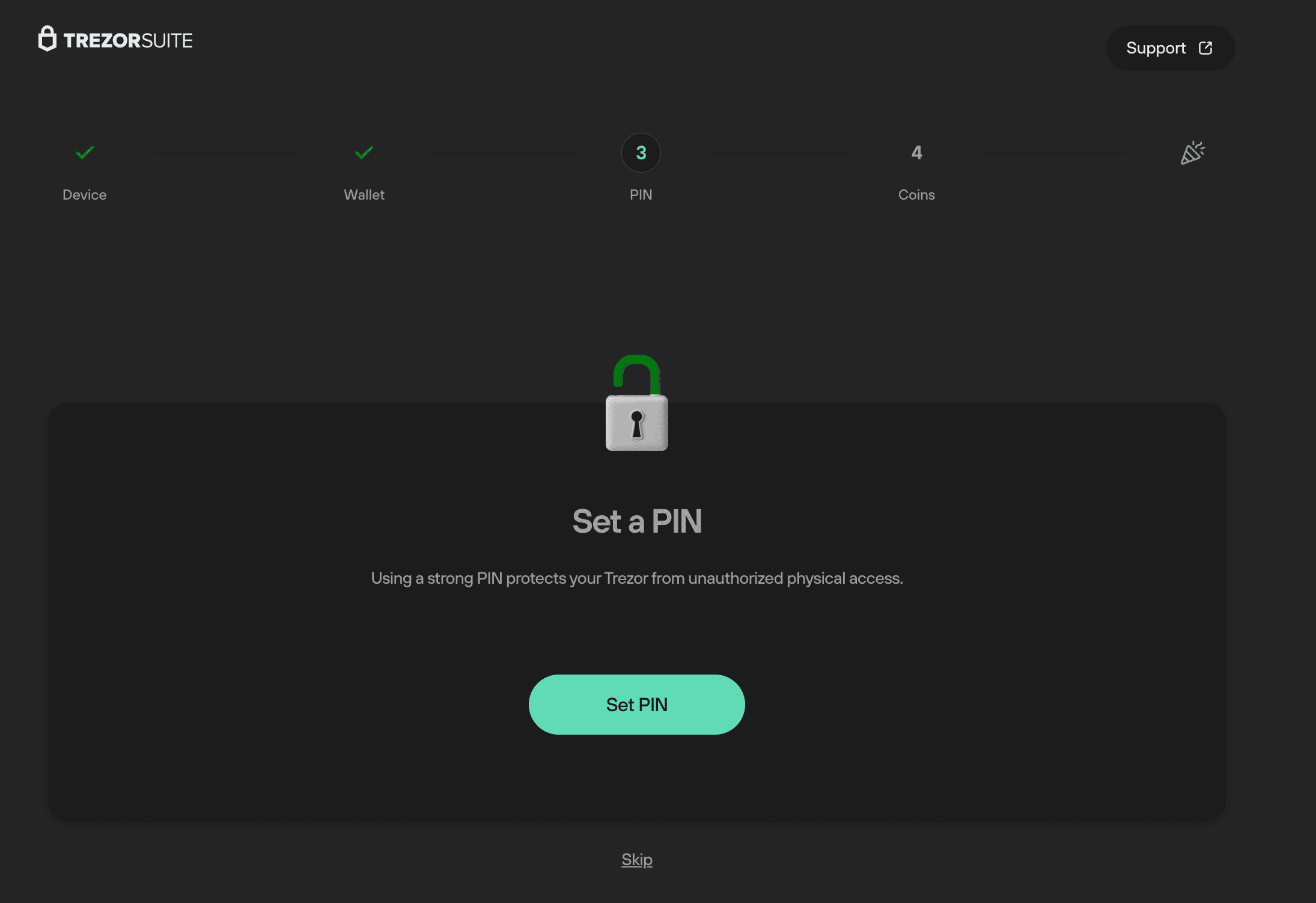
We recommend setting a device PIN during the initialization process so that your device is secured immediately.
If you skip this step when first setting up your device, you can set or change a PIN at any time in device settings:
- Go to the Settings menu by clicking on the gear icon in the top-right corner of Trezor Suite.
- Select the Device menu tab.
- In the Security section, the PIN feature can be turned on/off using the toggle switch, and you can change the device PIN at any time by selecting Change PIN.
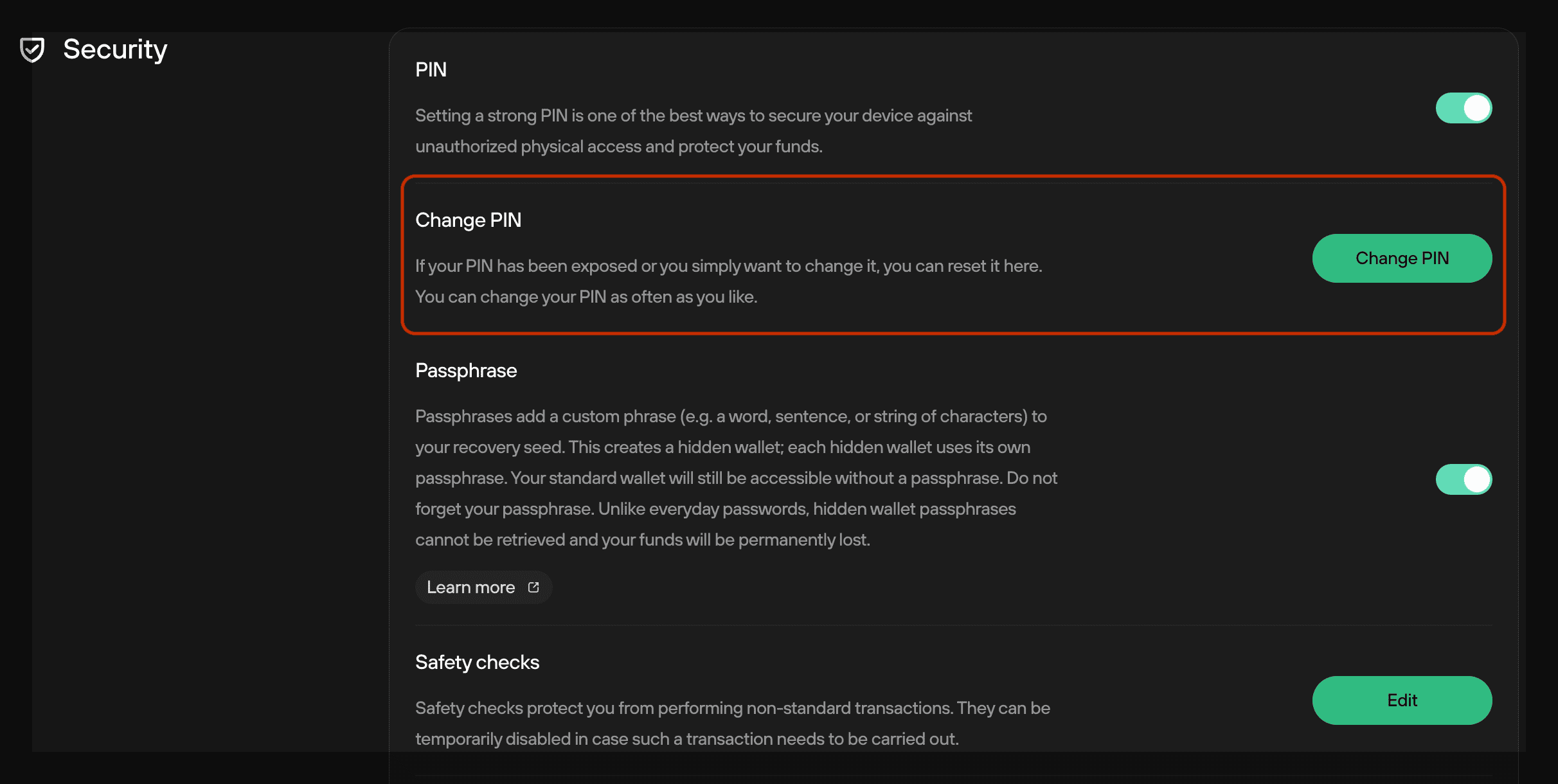
PIN entry on your Trezor device
- Use your finger (or a stylus) to enter your PIN by tapping on the touchscreen of your Trezor Safe 5.
- The PIN matrix displayed on the screen will shuffle the placement of the digits after every attempt.
- If you made a mistake when entering your PIN, use the arrow tile in the bottom-left corner of the screen to delete a number.
- Once you've entered your PIN, tap the green check mark in the bottom-right corner of the screen to confirm.
- Tapping the red cross tile in the bottom-left corner will discard your attempt to enter the PIN.
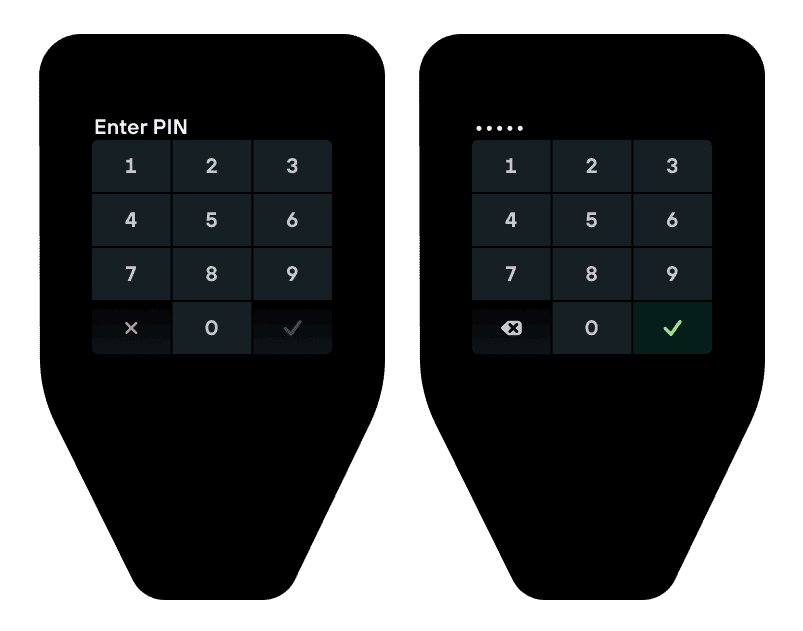
- Choose a number by pressing the buttons to scroll left or right.
- Once you've selected the correct number, select it by pressing both buttons at the same time.
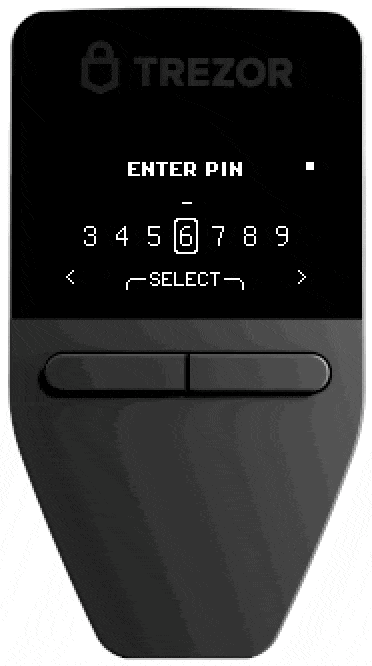
- Use your finger (or a stylus) to enter your PIN by tapping on the touchscreen of your Trezor Model T.
- The PIN matrix displayed on the screen will shuffle the placement of the digits after every attempt.
- If you make a mistake, use the yellow arrow tile in the bottom-left corner to restart the PIN entry procedure.
- Once you've entered your PIN, tap the green check mark in the bottom-right corner to confirm.
- Tapping the red lock tile will lock the device and discard your attempt to enter the PIN.
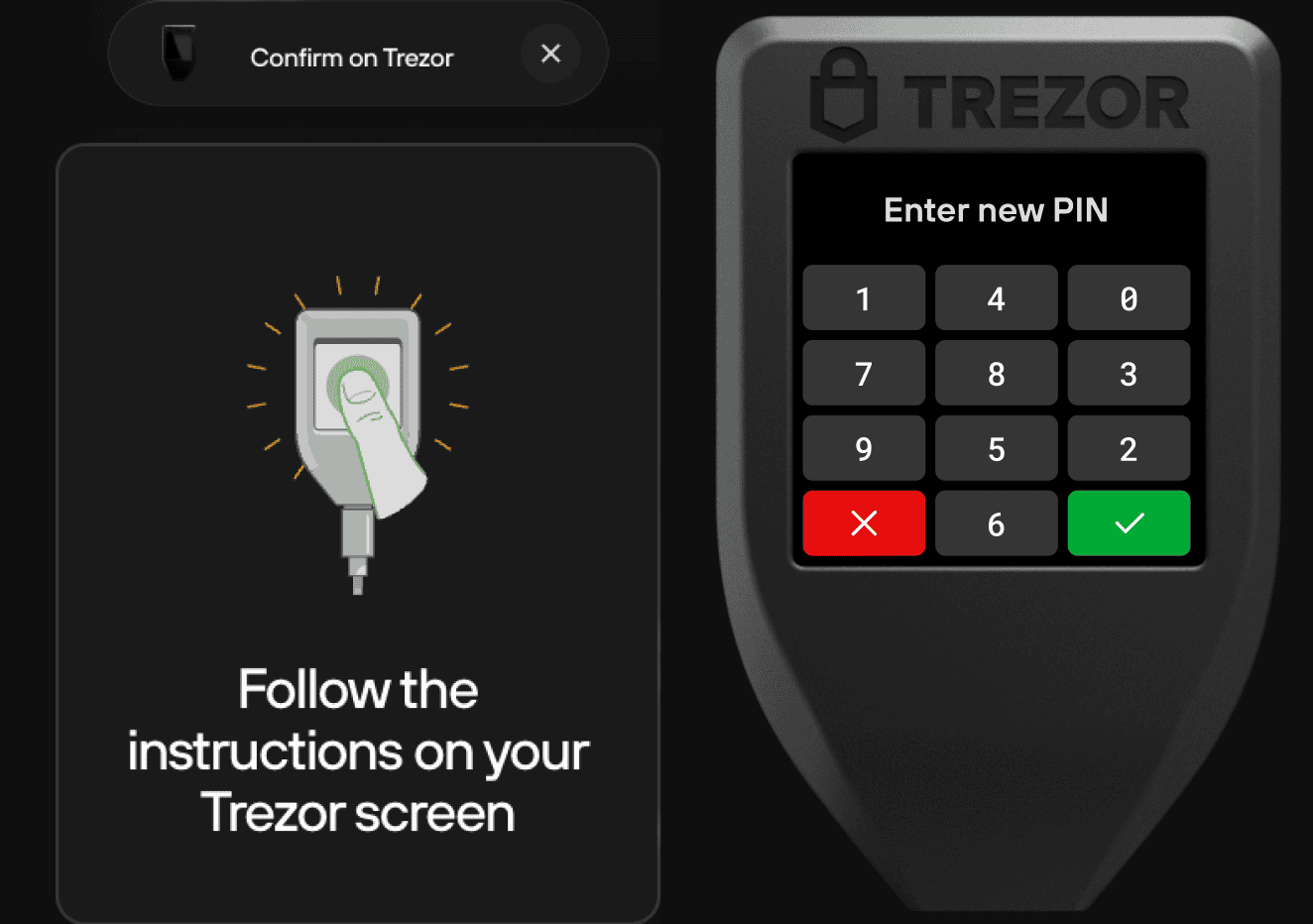
- Trezor Model One uses a blind matrix for PIN entry—a matrix of dots (instead of numbers) appears on your computer screen.
- The Trezor display indicates the placement of the numbers, which are always randomly arranged.
- Click the tiles that correspond to the number using your mouse cursor.
- Every time you use your Trezor, you must check the device display to determine the placement of the numbers.
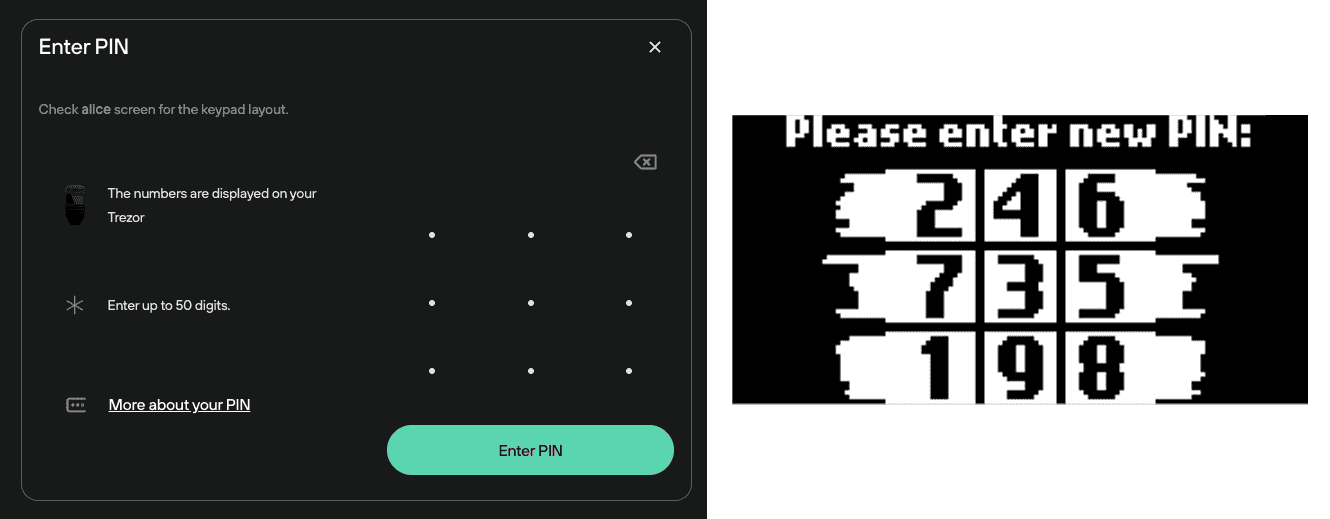
What if I forget my PIN?
Your PIN is independent of your wallet backup (formerly known as the recovery seed). This means you can set a new PIN using the Trezor recovery process if you forget it.
First, make sure you have a safe offline copy of your wallet backup.
Then, you'll need to wipe your device, which can be done by following these guides:
Using your wallet backup, you can then recover your wallet and set a new PIN in the process:
Read more about the PIN feature on the Trezor blog.